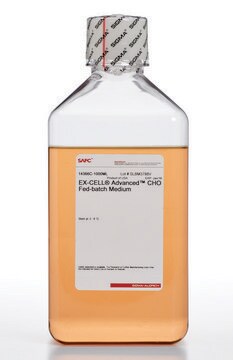Kluczowe dokumenty
CHOK1
CHOZN® CHO K1 Host Cell Line
Suspension-adapted in CD media
About This Item
Polecane produkty
opis
CHOK1 cell line derived from ECACC CHO K1
Poziom jakości
Warunki transportu
dry ice
temp. przechowywania
−196°C
Opis ogólny
Pochodzenie linii komórkowej
Postać fizyczna
Informacje prawne
Kod klasy składowania
10 - Combustible liquids
Klasa zagrożenia wodnego (WGK)
WGK 3
Temperatura zapłonu (°F)
Not applicable
Temperatura zapłonu (°C)
Not applicable
Wybierz jedną z najnowszych wersji:
Certyfikaty analizy (CoA)
Nie widzisz odpowiedniej wersji?
Jeśli potrzebujesz konkretnej wersji, możesz wyszukać konkretny certyfikat według numeru partii lub serii.
Masz już ten produkt?
Dokumenty związane z niedawno zakupionymi produktami zostały zamieszczone w Bibliotece dokumentów.
Produkty
Zrozumienie, w jaki sposób względy takie jak stężenie DMSO i techniki zamrażania są kluczowe dla pomyślnego wdrożenia kriokonserwacji o wysokiej gęstości komórek (HCDC).
Powiązane treści
Dowiedz się więcej o rozwoju linii komórkowych i odpowiednich produktach potrzebnych do tego procesu.
Nasz zespół naukowców ma doświadczenie we wszystkich obszarach badań, w tym w naukach przyrodniczych, materiałoznawstwie, syntezie chemicznej, chromatografii, analityce i wielu innych dziedzinach.
Skontaktuj się z zespołem ds. pomocy technicznej



